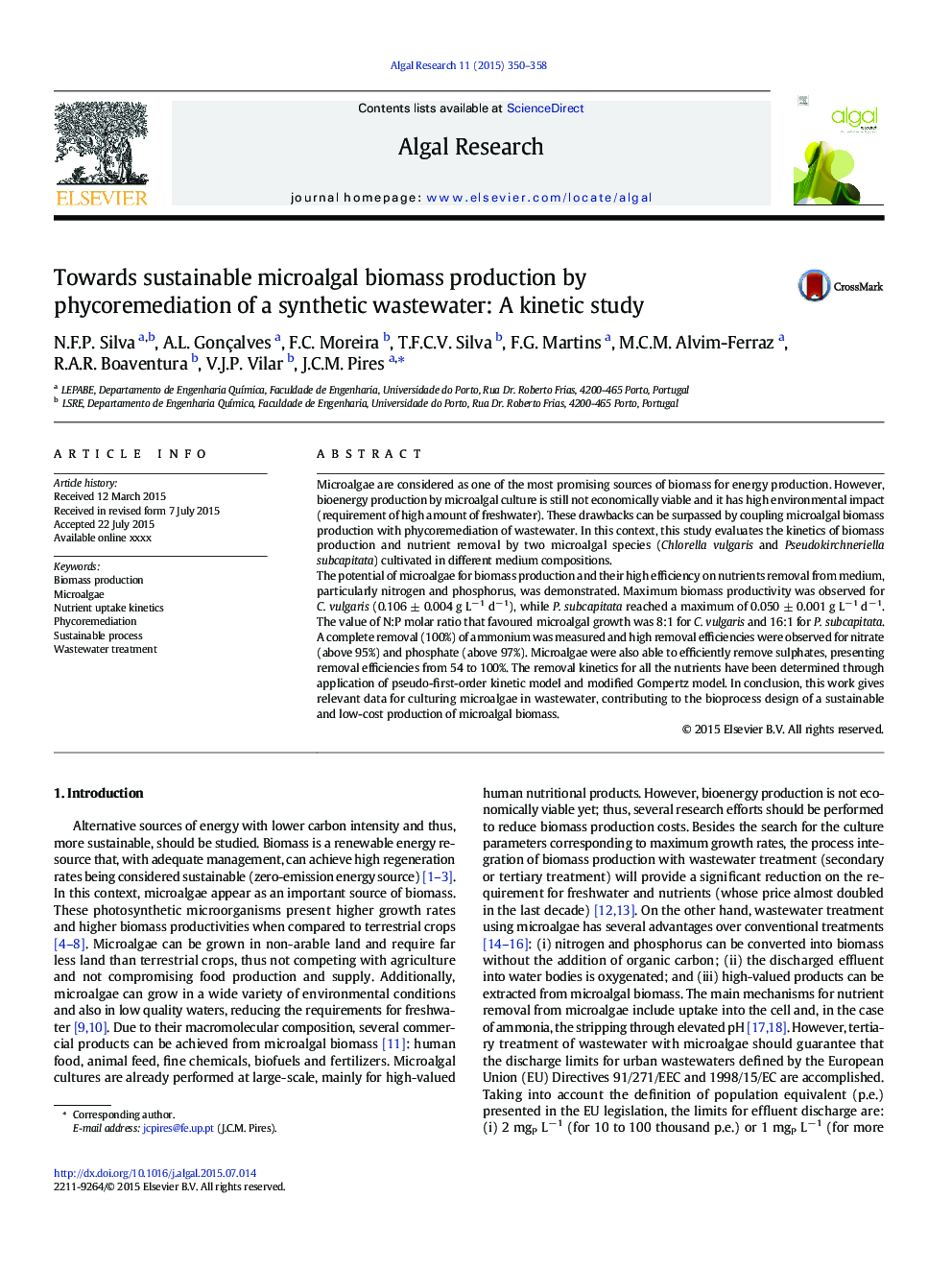| Article ID | Journal | Published Year | Pages | File Type |
|---|---|---|---|---|
| 8088019 | Algal Research | 2015 | 9 Pages |
Abstract
The potential of microalgae for biomass production and their high efficiency on nutrients removal from medium, particularly nitrogen and phosphorus, was demonstrated. Maximum biomass productivity was observed for C. vulgaris (0.106 ± 0.004 g Lâ 1 dâ 1), while P. subcapitata reached a maximum of 0.050 ± 0.001 g Lâ 1 dâ 1. The value of N:P molar ratio that favoured microalgal growth was 8:1 for C. vulgaris and 16:1 for P. subcapitata. A complete removal (100%) of ammonium was measured and high removal efficiencies were observed for nitrate (above 95%) and phosphate (above 97%). Microalgae were also able to efficiently remove sulphates, presenting removal efficiencies from 54 to 100%. The removal kinetics for all the nutrients have been determined through application of pseudo-first-order kinetic model and modified Gompertz model. In conclusion, this work gives relevant data for culturing microalgae in wastewater, contributing to the bioprocess design of a sustainable and low-cost production of microalgal biomass.
Keywords
Related Topics
Physical Sciences and Engineering
Energy
Renewable Energy, Sustainability and the Environment
Authors
N.F.P. Silva, A.L. Gonçalves, F.C. Moreira, T.F.C.V. Silva, F.G. Martins, M.C.M. Alvim-Ferraz, R.A.R. Boaventura, V.J.P. Vilar, J.C.M. Pires,
